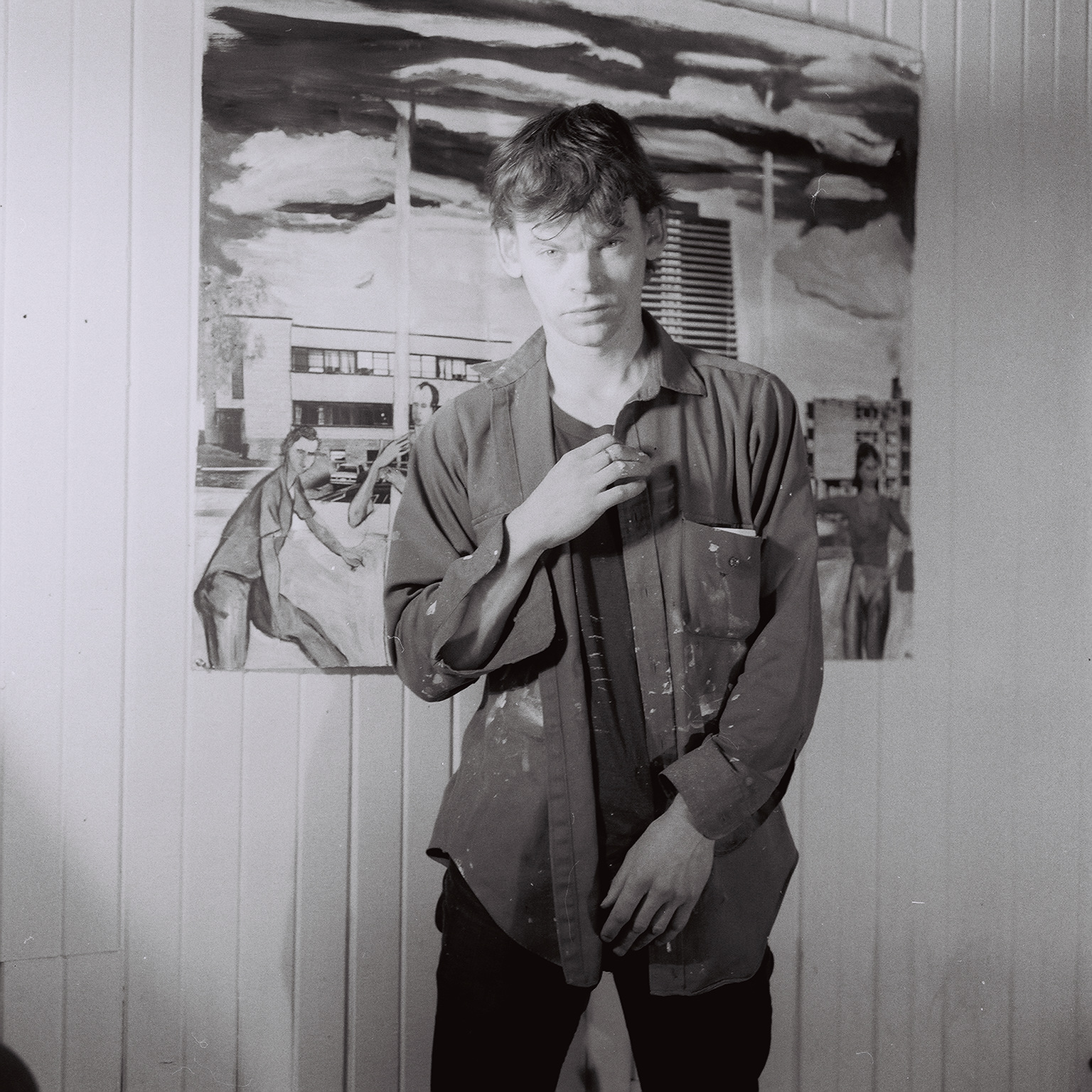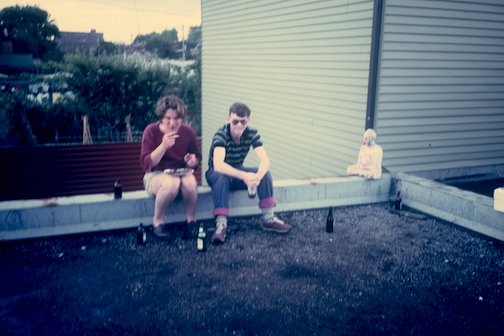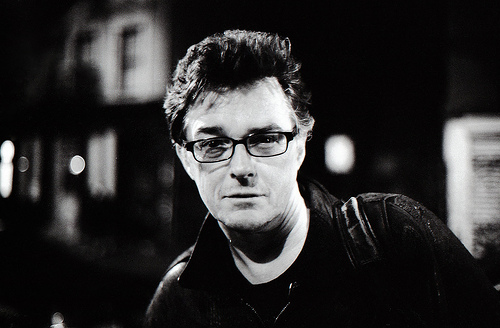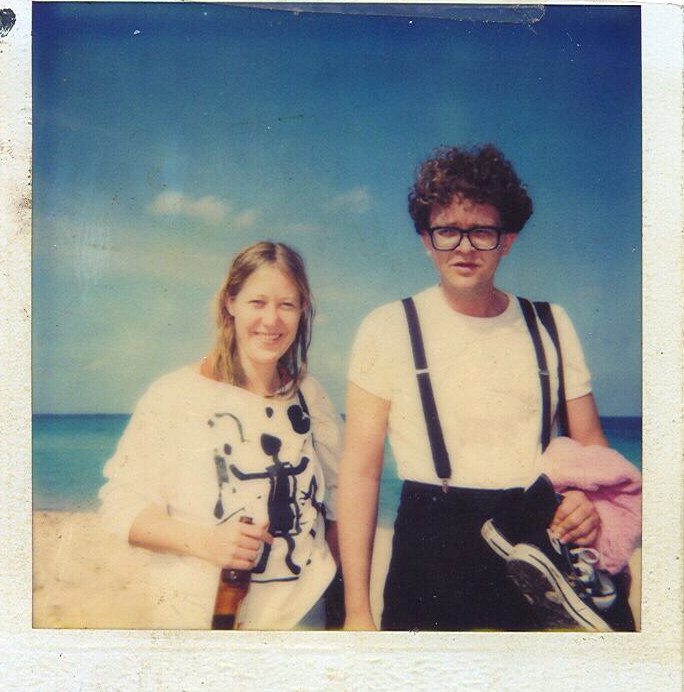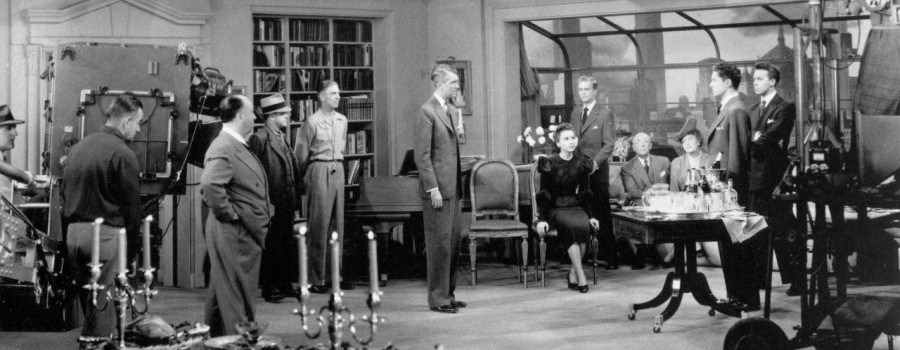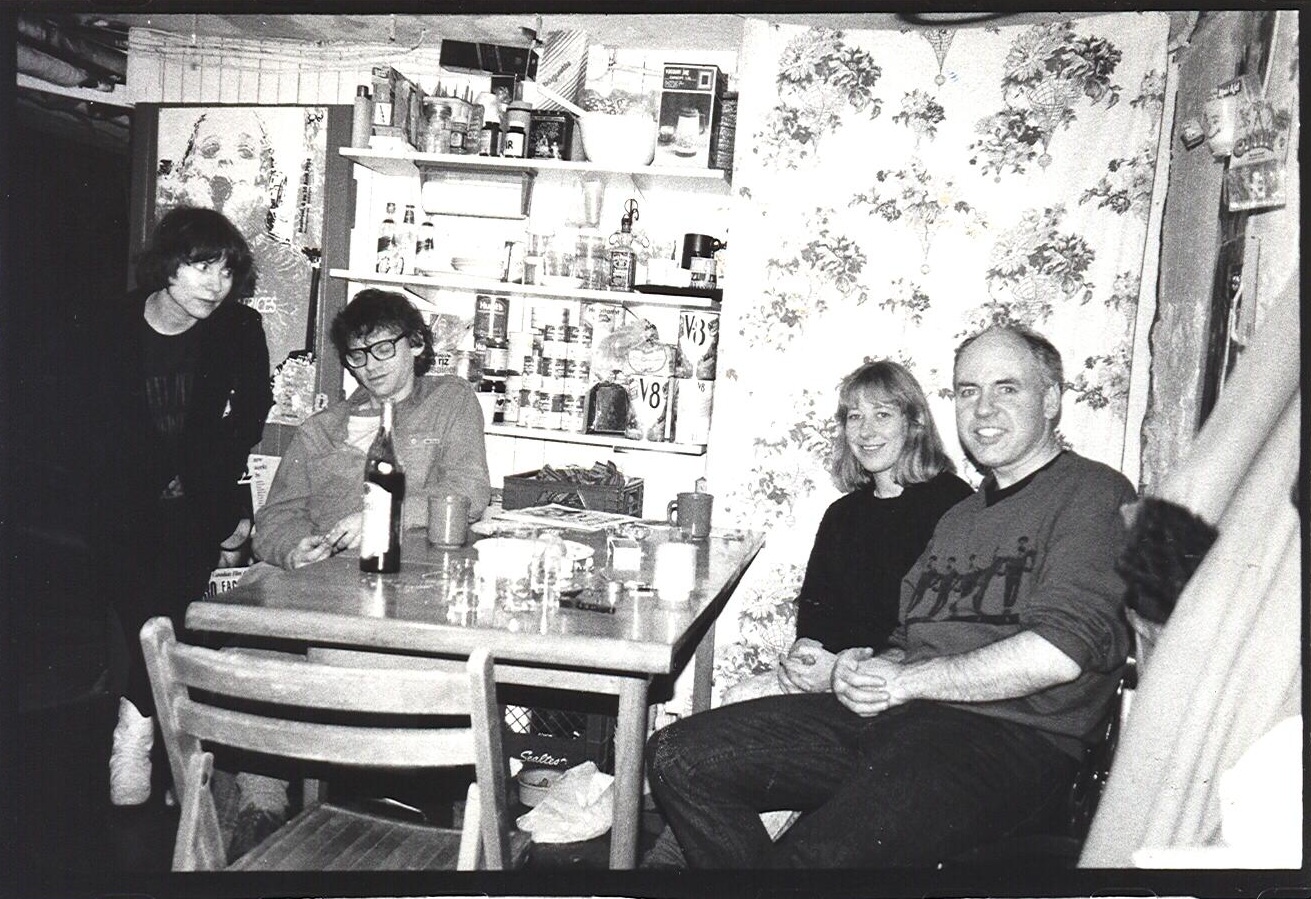And Why Not?: an interview with Jim Anderson (May 2016)
Jim: There was a perception that the Funnel was a closed group, a closed environment. We were reacting defensively. It was a bit paranoid really, thinking we would get swallowed up if we made the organization more democratic and open to everyone. The concern was that we’d get swamped by people who wanted to use the Funnel as a way of getting into Hollywood. Hollywood Canada. Rather than sticking to experimental film, the intent of why the Funnel was set up. It was a protected group. We had endless discussions about that, it was a big issue. I agree with it still, that we had to put measures in place so we didn’t get swamped.
Mike: But the Funnel didn’t have much commercial filmmakers wanted. There were a few super 8 cameras, an old moviola, a single lighting kit, some projectors.
Jim: What were we defending exactly? I remember that was the sentiment, I don’t know whether it was based on anything real. Now on reflection I think, yeah, we could have been more open, and not worry if once in a while someone might abuse the intent of the Funnel. As long as it wasn’t completely abused, so that the idea of the Funnel no longer existed. The idea of the Funnel was that experimental film was fragile and small and not very well known and had different intents than commercial or independent filmmakers. We were probably too narrow minded, suspicious of people who wanted to use the Funnel for their own reasons.
Mike: Did you sit on the last board of the Toronto Filmmaker’s Co-op in 1979? It was mostly made up of future Funnel members (Ross McLaren, Anna Gronau, Adam Swica, Tom Urquhart…) who hoped to take it over and turn it into an experimental haven. But they had come too late. Commercial interests (represented by Co-op head honcho Bill Boyle) had taken over from the experimentalists who had started it, and ran up an insurmountable debt. It was a lesson many carried over to the Funnel. Never again!
Jim: Minorities have to have a certain stance, you have to resist or you get swamped. I don’t know how to reconcile that with the hope of an open and equal and democratic organization. How does democracy integrate differences? People can maintain differences and keep their identities, often that means having certain conditions, setting up boundaries.
Mike: Did you help build the Funnel theatre?
Jim: Yes. What did I contribute? I just did what David Bennell told me to do. He was the carpenter. The major thing was getting the risers underneath the seats, so the floor was inclined. We blacked out the space. We had to put in some walls and follow regulations. We built a projection booth, that must have been designed by David Bennell. We all had thoughts about what experimental film would need. What formats could we accommodate, the different kind of projectors required. In some ways we were adopting the same old way of doing things with a closed off projection booth, isn’t that how all theatres are set up? I don’t know if we were that innovative in terms of rethinking the design of the theatre itself. Why do you need a projection booth? We relied on old standard ideas, the theatre had to be dark, the booth separated from the audience, so you don’t hear the projector. There was this idea that the spectator should be in a certain kind of environment with the screen. But the spirit of that time was expanded cinema. What did that mean? It meant breaking down those distinctions, celebrating environmental cinema, having the projector in the midst of the audience. Some Funnel members like John Porter did projector performances. But our original theatre was designed in a classical way.
All the Funnel members had to volunteer, which meant running the film nights. All of the members had to sell tickets at the door, or sell beer and coffee, or do the projection. That was quite organized, you signed up on a list. I remember feeling alienated from the audience in the projection booth, you had to open the window and look out. It was hard to tell how the sound was, it was hard to hear what they were hearing out there. You were constantly opening the door, sound was piped into the booth but that could screw up, especially with super 8. Did it have to be designed that way?
Mike: What was Ross McLaren like? Was he the leader, or were there no leaders?
Jim: I guess I met him at CEAC because I showed my movies there. He must have been supportive of my work and liked what I was doing. I didn’t really know him so well. Before the Funnel was really starting he approached me and said we’re trying to get together a few people to make a place for experimental film and you could be part of it if you like. He invited me to be part of the Funnel, though I don’t know if it was even called the Funnel yet. Our conversation happened before the move. Ross started asking people he knew who were interested in the same kind of experimental film that he was interested in. His interests were very specific, he had a very particular idea about what experimental film was. And of course some of us had the same general sense of what experimental was. We were aware of what was happening in New York. Michael Snow and David Rimmer (both had lived in New York) helped to bring structural film to Canada, along with Ross.
When an organization starts you need to have a board, or a structure. The arts councils required us to have a president and treasurer, you have to do it legally. I don’t think we would have done that if we didn’t have to, having a president, that isn’t part of the spirit. President, what’s that? But we had to do it for government relations.
Now, individuals can put a stamp on an organization, even if they’re not the one officially in charge. Ross had a certain say about that, impressing his personality on the organization. He was very aware of the differences between experimental and other forms of film. He had very particular opinions about Hollywood. We were trying to do something else. He did all the programming for the first couple of years. Anna Gronau became the programmer after Ross, they were a couple. Ross knew about the experimental scene in Toronto but also scenes outside the city, and many of us didn’t. It was hard to see experimental work then. You would read books, and imagine the films by reading the descriptions.
I think at the board meeting the programmer would make a report. They might talk about what they were thinking about showing. They would ask for suggestions. But then all the people you don’t want to make suggestions make the suggestions. Like… oh, I can’t name names.
Mike: You looked after the distribution collection. How did that happen?
Jim: The Funnel basically started as a theatre for showing experimental films. We were all in agreement with that, the most important thing was to show work because that was lacking. We wanted a regular venue, a site dedicated to experimental film, not someone’s basement. That was a priority. If I knew that something might be shown, I might be inspired to follow through on some projects. The equipment wasn’t such a big deal to me. But what happens after you make films? Films wound up on shelves in the exhibition booth. That brought up the question of distribution.
After building the theatre, we started showing films in a regular way, in the same location each week. We had a membership that were making films, we’re showing them in our own theatre, but perhaps these films could travel? Anna and then Michaelle McLean were the Funnel directors, and they would get requests to show programs of Funnel work. I think they did a lot of spontaneous distribution of Funnel work. They were in touch with a number of other artist-run centres and film co-ops.
One day I noticed films on a shelf in the projection booth and thought they should have labels on them and be organized and accessible. I may be claiming too much there, did I start doing that work? I remember offering to volunteer at a board meeting. I said I’d be willing to take on responsibility for the collection. At first it meant keeping an eye on the shelf. I was willing to come in one day a week. I wasn’t in a position to make decisions about what would get shown in a program, Anna and Michaelle were doing that. If distribution was at a high level or involving a lot of money, you might have concerns about procedures. But experimental film was small, mostly there wasn’t any worry about people abusing power. There weren’t that many shows. I worked there for a year, labeling films, inspecting and cleaning the films. When we shipped films out they would have to put into special cases and sent via couriers like Purolator, then when they came back they had to be inspected to make sure there wasn’t damage. I would do that. Anna and Michaelle would deal with bookings and fees. I was the guy who made sure everything was OK physically. After I did that for a year the feeling was: why don’t we apply for money for this part-time job? We received that part of the grant and it was agreed and voted on that I would do that. This was in 1983, before the first (of two) distribution catalogues came out. I worked with Michaelle on the catalogue. I might have approached each of the members and asked what films they had made, in order to help put the catalogue together. Most distribution collections didn’t want super 8, it was too complicated to show. They didn’t want loops or installation pieces. But we distributed every kind of film work that artists made.
Mike: The 1987 Funnel catalogue supplement states: “Jim Anderson has a number of film performances and installation pieces available for presentation. These include such pieces as: Prehistoric Expanded Cinema, Post Hysteric Ear, The Meaning Machine, The Piece of Turf, A Film At The Bottom Of My Foot, My Trip To Holland and Sailing Around The World. Most do not require elaborate set-ups. Please inquire for further information.”
Jim: Publishing the catalogue increased the films’ visibility and circulation. More people knew about the collection and used it as a result. I thought it was very important to have a catalogue. This was before the internet. CFMDC (Canadian Filmmakers Distribution Centre) also published a catalogue of their film holdings. Some of us had work in both distribution places. But CFMDC didn’t take super 8 films or performance work.
Mike: How do you think Dot Tuer changed the Funnel?
Jim: One of the things about being a member is that you had to make a film. That was one of the conditions. Tom Urquhart was the exception. Tom never really made films, but there’s no way we could not have him be a member. He was there all the time, he helped build the theatre, he was dedicated to the whole idea of alternative film. He was very generous and humble, he didn’t have to be making films in order to support others. He had a car (hardly anyone had a car) so he could fetch visiting filmmakers from the airport. So what do you do? Make him an honourary member? I think he did eventually make a film, although nobody bugged him about it.
Every year at the Funnel each member would get a roll of super 8 paid for by the Funnel. If you wanted to, you did something with it. Then it got shown on the opening night of each year. It was very popular.
Did Dot change the Funnel? I knew her in a different way. She loved people’s personal films. She loved it when someone made a super 8 film about their relations with other people, or a little film about their cat, diaristic stuff. That sounds contrary to what she wrote about, She could be very analytical about films, and why not?
Mike: She asked questions after the screenings, she was one of the few members who wrote, she programmed and wrote for several catalogues.
Jim: We received more money to put on special series and publish catalogues. It changed the Funnel, it was certainly more than having open screenings. But did those activities make the organization too institutional and get away from our roots? I don’t think so, the whole level of experimental film production and exhibition was so low. It was just getting by, hardly surviving. In terms of putting together film series, did that make the organization too rigid, or academic? Again, I don’t think so. We did need some writers. The risk is that the writers decide what is good and what is bad. But a lot of the writing for the film series was just trying to introduce the movies, or give an overview of what’s happening. I’m all in favour of that.
Sometimes I wish we were more of a community. Did we nurture and support each other? Looking back I wish I was a bit more open. I was there, but with my own work I tended to be a bit isolating. I wouldn’t show people my stuff or look for feedback. I’m trying to think if some of the others shared their process. I didn’t go so much to other people’s places and see their work. Perhaps others were doing that, it depends on your character. “Hey, what are you doing? What are you working on?” Well, I did ask those questions, but I didn’t always follow up. Perhaps I’m too sensitive about other’s judgments, I want my stuff to be, what, exceptional? More than someone else? Why couldn’t I hold the feeling that we’re all in the same stew pot so let’s acknowledge each other, have fun, pat each other on the back.
Mike: Was there a feeling of competition?
Jim: Maybe only in my own mind. That’s what I’m trying to get at. I’m sort of saying that aren’t I? If I’m comparing… there’s a good part to that, I want to do the best job I can. But there wasn’t enough times when I actually reached out and said hey, I’m trying to finish a film and I’m having some doubts. I didn’t do that enough.
Mike: People’s work could spur you on, and be inspirational.
Jim: Yes, it was great seeing other Funnel member’s work. If any member wanted to have a show it was pretty well automatic, they could be plugged into the schedule, the programmers would never say we don’t like your work.
Mike: There were many filmmakers in the community who complained about that. Screening time was very tight, many asked why Funnel artists who had barely made any work at all were getting shows while much more dedicated and established filmmakers couldn’t get shown. Because they sit on a board and sell beer on Saturday nights?
Jim: They’re getting shows just because they’re a member. So how did they become a member? The board had to vote yes.
Mike: It fostered a sense of division in the larger experimental film community.
Jim: I know that. Some artists would say: why can’t I get a show?
Mike: There were lots of experimental filmmakers in Toronto who weren’t members.
Jim: Yes. There were even filmmakers who had their foot in the door but still wondered: am I not part of this? I don’t know if the women’s groups felt that. Like Midi Onodera, she always seemed to be interested in the Funnel, but she was also involved with other groups. I liked Midi. Again, it’s like a circle. If you’re a member you could have a show no questions asked. Well then you have to become a member. Why didn’t more artists apply? Because they didn’t feel like they were part of the operation.
Mike: Becoming a member required a lot of volunteer hours. That created a boundary between folks who had family obligations or who lived slightly outside the city.
Jim: That’s true. And we never had lists of who did what, or who should be doing more. I think you’re asking: did we have an attitude about that? If someone wasn’t doing their part did we remind them?
Mike: I remember people complaining about Mike Snow. He’s a member, how come he never volunteers around here?
Jim (laughs): There you go. Then you get into the exceptions again. Joyce Wieland, Bruce Elder. You kind of hit a nail there. It goes against the original spirit that everyone should be equal, no hierarchy. But in practice some were a little more equal. Although in John Porter’s photo book there’s a picture of Joyce with a caption: Joyce Wieland doing volunteer work at the Funnel. I think she tried.

front row: Dave Anderson, David Bennell, Jim Anderson (arms spread wide), Patrick Jenkins at the Funnel, 507 King Street East. Photo by John Porter
Mike: Dot Tuer brought forward a motion at an annual general meeting in 1986 that proposed associate members could vote for which full members could sit on the board. It was a modest gesture towards opening up the membership.
Jim: I think I would have been in favour of that. Wouldn’t I? How could I say no to Dot? Was it again a case of: are people here for the right reasons? Perhaps associate members would inundate the membership. You could become an associate member by paying, and then you could get into screenings for free. John Porter and I were the most faithful attendees because we lived next door.
Mike: You lived in a warehouse building that was also home to John Porter, Dot Tuer and Paul McGowan (all Funnel members). Did you feel like your address was an extension of the Funnel?
Jim: You must have come to some of our parties. Were we an extension of the Funnel? No… but why not?
Mike: Out of a membership of 40 people, four lived under the same roof, that’s ten percent.
Jim: Sure. John and I would say let’s have a party. I wonder why we didn’t do it more, instead of going to the Dominion Tavern? It was just around the corner from the Funnel, we were a block away. At some point Edie Steiner lived even closer, she was in the other corner building. Anna Gronau lived just up the road on Queen Street. I think if there was an emergency and someone needed a place to sleep they could stay.
I think we came up with ideas about programming. I suggested a film series of artists on artists. I always loved it when artists (instead of curators) put together shows. We invited certain filmmakers to choose whatever they wanted to show, and then say why. I think we asked Joyce to do a program. We asked Michael Snow. Some of them seemed an obvious choice. At the same time I like good critical writing too, even by someone who doesn’t make work. I think it’s a real art form, good cultural writing. But I love when artists are being interviewed, they say things that are not always proper or don’t fit into what’s supposed to be said. It’s more personal.
Mike: Do you think it helped your filmmaking being at the Funnel?
Jim: It definitely helped. There was a venue. I was fairly fixed on the idea that there had to be a place. Some of the alternative galleries like YYZ would show artist’s media, I wonder why I didn’t approach them and propose a show. Maybe I was still separating film and visual art. Like my brother Dave, I painted as well and made movies. When I went to Paris I dropped the filmmaking and just made watercolours. I think I was just caught up with my domestic situation. That’s when my daughter was born. I was shell shocked, though not in a bad way. After moving to a big city like Paris I was just trying to grapple with day-to-day stuff, trying to figure out where things were. I was a bit overwhelmed. But before leaving there might have been part of me that was consciously asking if I was getting anywhere in Toronto. Maybe it was time to think about another direction. I wonder if that was happening? I think this is where someone’s character comes into play. If someone else had wound up in Paris after being involved in the alternative film scene, they would have said great, let’s make connections and get involved with artists here. Why not? My character might be lacking some self-confidence. Why? Was I being nurtured and supported here in Toronto? That’s a difficult one. I can be the type who says it’s my fault, I didn’t do my part. Let alone what may have been not encouraging. If I’m not going to try and get my work shown then what do I expect? I think that’s what happened. I didn’t know the new scene in Paris.
Mike: How were you affected by the end of the Funnel?
Jim: The Funnel ended when I was starting to go to Paris. I was in favour of the move. I realized that rent was going to be a lot higher, but in principle I was in favour of being in a more central place, closer to the art scene. The bars and pandemonium. The Funnel on King Street wasn’t so far away, but to have to trek all the way over to the east end was difficult. Whereas if the theatre was in the Soho area, it was more likely to get people coming to the screenings. Although the prospect of a move was overwhelming.
Mike: The landlord didn’t know a theatre was going into the building. And then the building was reassessed and the Funnel was on the hook for a massive and unexpected tax bill.
Jim: Well, there’s a time for something to end. Why should the Funnel continue? We’d already got things started, so experimental film had a more visible presence, and there were other groups working. Maybe the Funnel didn’t have to go on anymore.
I thought we should open up what we were showing, not concentrate on work that was so extremely experimental. We could show so-called independent films or even movies that were experimental in a Hollywood context, like Hitchcock’s one-shot film Rope. Why not?
Mike: Was this a discussion you had with others at the Funnel?
Jim: No, this discussion just took place in my own mind. (laughs) Kathryn Elder did run a historical series of films at the Funnel. Sometimes she showed work from the National Film Board that was less strictly experimental, that was good. What could you do with a venue like the Funnel? Have a program every night? That’s how cinemas work.
Mike: In retrospect I thought that if the Funnel had opened up to a distributor like DEC (Development Education Centre) who had hundreds of films and longed for a venue to show them (they built a community theatre called The Euclid that opened shortly after the Funnel closed), it would have served both orgs so well.
Jim: Peter Stevens, who was the director of DEC, did speak to people at the Funnel about sharing the theatre.
Mike: The networkers had left the Funnel. People like Dot and Judith Doyle were gone.
Jim: I helped Judith with her Eye of the Mask film that she shot in Nicaragua. She edited at the Funnel, and I helped sync up her rushes.
Mike: She had gear problems during the shoot which led to drifting sync.
Jim: Some people at the Funnel might have wondered: is she trying to take advantage of the facilities here to make a propaganda film? Was there that kind of attitude at the Funnel?
Mike: I was on the board when we were asked by Midi Onodera if she could use the charitable status number, and most felt that anyone who wanted that number couldn’t be making an “experimental” film. The orthodoxy was shocking. The board refused her request (her producer was former Funnel director Michaelle McLean), with the predictable result that both were upset.
Jim: They might have been worried that there would be an avalanche of requests for the charitable number. Some outside forces might start taking advantage.
Mike: Who were these outside forces? And who decides what is outside? Midi and Michaelle were a big part of the reason that the Funnel was even up and running. Many board members felt they were in a position to decide what was and what was not “experimental film.”
Jim: So there’s judgment around what was experimental. I think there was some paranoia about that. There had to be limits, the Toronto Filmmaker’s Co-op got swallowed up by commercial interests. People wanted to use it for their own commercial projects. In terms of the screenings, were we thinking it was going to be taken over by people showing non-experimental films?
Mike: Were you surprised when the Funnel closed?
Jim: I don’t know if I was surprised. There was some personal stuff going on, I may have been mixing it up with the closing, I can’t really talk about it with the recorder running. Maybe it served us right. What an answer.
What did I get out of it, what does it add up to in terms of my own work? I certainly did get some things, I did show at the Collective in New York. I hate to bring that in, “I was shown in New York.” Isn’t that weird? The spirit was that we didn’t privilege one venue over another. The whole New York-Toronto connection was strange, especially in the alternative film movement. New York had an outsized influence. At the Funnel there was a sense that we wanted to be like New York. New York was the underground, and then there was another place, the Funnel, that was imitating the first underground. So what’s that? Does that become the same thing or different?
Mike: You felt the Funnel was imitating the New York underground scene?
Jim: Not in a bad way. Perhaps imitating is too strong a word. That’s where it gets back to certain characters putting stamps on organizations. Ross had a strong New York connection. He lived there in the eighties. He was very open about his thoughts about what was good and what was not so good, what was experimental and what was not. He tended to go that way. The structural films that came out of New York were a strong influence at the Funnel. P. Adams Sitney’s book Visionary Film: is that what we were? Sitney tried to sum up the different styles of experimental film, and it all wound up with structuralism.
Mike: I remember Phil Hoffman asking: why doesn’t anyone at the Funnel make personal diary films? They’re all so abstract or they’re about the act of making films.
Jim: Structural film was a New York influence. It determined what was legitimate, what was the correct thing to make. Personal film did exist in New York as well with Jonas Mekas and Stan Brakhage. But even in New York they had a reaction to those personal films, and those were the structuralists.
Mike: Brakhage and Mekas weren’t shown much at the Funnel. Stan started showing at the Funnel only when he was actually living here. Mike Snow had the most shows of any artist at the Funnel.
Jim: He is the native son after all.
